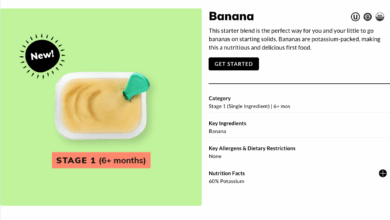
Facebook Ad Targeting Options Precision Advertising
Facebook ad targeting options precision advertising sets the stage for a deep dive into maximizing your ad campaigns. This exploration unveils the intricacies of Facebook’s targeting tools, allowing businesses to connect with highly specific audiences. From basic demographics to advanced strategies involving interests, behaviors, and custom audiences, we’ll uncover the secrets to precision advertising.
This comprehensive guide will explore the various targeting options available on Facebook, from basic demographic filtering to sophisticated techniques like lookalike audiences. We’ll examine the ethical considerations surrounding data privacy and how to navigate these complexities responsibly. Finally, we’ll look at future trends in precision advertising, providing insights into the ever-evolving landscape of Facebook advertising.
Introduction to Facebook Ad Targeting
Facebook ad targeting is a powerful tool for businesses to reach their ideal customers. It allows advertisers to precisely define their audience based on various demographics, interests, behaviors, and more. This precision minimizes wasted ad spend by ensuring your ads are shown only to people who are most likely to be interested in your product or service. This targeted approach significantly increases the chances of conversions and return on investment (ROI).The core principle behind precise targeting on Facebook is leveraging the vast amount of user data the platform collects.
Facebook meticulously tracks user interactions, preferences, and activities across the platform, providing advertisers with highly granular insights. This data-driven approach allows for detailed audience segmentation and the creation of highly effective ad campaigns. This enables businesses to reach the right people at the right time with the right message.
Facebook’s User Data Utilization
Facebook gathers user data from various sources, including profile information, posts, interactions with other users, website activity, and apps. This information is meticulously compiled and analyzed to create detailed user profiles. The platform uses sophisticated algorithms to identify patterns and insights that help tailor ad targeting. This enables advertisers to identify the most relevant demographics and interests to maximize their reach.
Different Targeting Options
Facebook offers a wide range of targeting options, allowing businesses to create highly specific and effective ad campaigns. These options enable advertisers to filter their audience based on a multitude of criteria, ensuring that their ads reach the most qualified prospects. By combining various targeting parameters, businesses can achieve optimal ad performance and maximize their ROI.
| Targeting Option Type | Description | Examples |
|---|---|---|
| Demographic Targeting | Targets users based on characteristics like age, gender, location, education, relationship status, and more. | Targeting women aged 25-35 in the San Francisco Bay Area who are married and have a college degree. |
| Interest Targeting | Targets users based on their interests, hobbies, and pages they like. | Targeting users interested in photography, travel, and sustainable living. |
| Behavioral Targeting | Targets users based on their online behavior, such as websites visited, apps used, and purchase history. | Targeting users who have recently purchased a similar product or visited websites related to your business. |
| Custom Audiences | Targets users who have interacted with your business before, such as website visitors, email subscribers, or customer lists. | Targeting users who have previously visited your website or downloaded a specific product. |
| Lookalike Audiences | Targets users who are similar to your existing customers or website visitors. | Creating a lookalike audience based on users who have purchased a specific product in the past. |
Advanced Targeting Strategies: Facebook Ad Targeting Options Precision Advertising
Beyond basic demographics, Facebook Ads offer a treasure trove of advanced targeting options that can significantly improve your campaign performance. These strategies allow you to pinpoint your ideal audience with unprecedented precision, ensuring your ads reach the individuals most likely to convert. Understanding these advanced techniques can be the key to maximizing your return on investment.Advanced targeting goes beyond simply identifying who your customers are.
Facebook ad targeting options offer incredible precision advertising, letting you reach specific demographics and interests. To further boost your brand visibility, consider leveraging Instagram’s trending hashtags, like the ones listed in this helpful article on 22 trending hashtags on instagram for brand visibility. Using relevant hashtags can greatly increase your reach on Instagram, complementing your precise Facebook ad targeting strategy for optimal results.
It delves into their interests, online behaviors, and connections to create highly tailored ad campaigns. This precision is crucial for optimizing ad spend and achieving your marketing goals.
Interests
Understanding your audience’s interests is paramount for successful targeting. This involves identifying specific topics, hobbies, and passions that resonate with your ideal customer. Facebook’s vast database allows you to target users interested in particular products, brands, or even specific events. For example, if you sell hiking gear, targeting users interested in outdoor activities, hiking groups, or specific trail names can significantly increase the likelihood of reaching potential customers.
Behaviors
Facebook’s behavior targeting goes beyond interests to consider user actions and online habits. This includes purchasing history, device usage, and website interactions. By understanding how users interact with the digital world, you can tailor your ads to resonate with their specific needs and preferences. For instance, if you sell travel packages, targeting users who have recently searched for flights or hotels can increase ad relevance and conversion rates.
Connections
Leveraging connections allows you to reach users based on their relationships with your business or your competitors. This includes targeting users who have engaged with your website, interacted with your brand pages, or have shown interest in your products. This method allows you to reach existing customers or prospects who have already demonstrated an affinity for your brand.
Custom Audiences
Custom audiences allow you to upload your own customer data (email lists, website visitors, app users) to create a targeted audience on Facebook. This powerful feature enables you to reach existing customers or potential customers who have already demonstrated an interest in your products or services. This method allows for the most personalized approach. Importantly, it enhances ad performance by focusing on people already familiar with or interested in your offerings.
Lookalike Audiences
Lookalike audiences allow you to expand your reach beyond your existing customer base. Facebook identifies users with similar characteristics to your existing customers and targets them with your ads. This method allows you to discover new potential customers who share similar interests, behaviors, and demographics as your current customer base. For instance, if you have a loyal customer base that frequently buys your products, creating a lookalike audience can expand your reach to similar individuals.
Lookalike audiences are often highly effective in identifying new prospects.
Facebook ad targeting options offer incredible precision advertising, letting you really zero in on your ideal audience. But, sometimes a fresh visual approach can make a big impact too, like using 7 trendy templates and layouts make pic collages for instagram here. Ultimately, combining strong targeting with visually appealing content is key to successful Facebook ad campaigns.
Comparison Table of Targeting Options
| Targeting Option | Description | Effectiveness |
|---|---|---|
| Demographics | Basic characteristics like age, gender, location | Limited; can be effective in combination with other options |
| Interests | Topics, hobbies, and passions | Good; highly targeted |
| Behaviors | Online actions, purchase history | Excellent; very precise targeting |
| Connections | Users connected to your business | High; reaching engaged audiences |
| Custom Audiences | Upload your own data for precise targeting | Excellent; tailored to your existing customer base |
| Lookalike Audiences | Expand reach to similar users | Good; potential to identify new customers |
Measuring and Optimizing Precision Advertising Campaigns

Precision advertising on Facebook requires more than just setting up targeted campaigns. It demands a keen understanding of campaign performance and the ability to adapt strategies based on real-time data. This section delves into the crucial aspects of measuring and optimizing your Facebook ad campaigns for maximum impact.Effective precision advertising isn’t a one-and-done process. It’s an iterative approach, requiring continuous monitoring, analysis, and adjustments to ensure your campaigns stay on track and deliver the desired results.
Facebook ad targeting options offer incredible precision advertising, allowing you to reach the perfect audience. However, boosting your Instagram presence is just as important, and using tools like the ones featured in 24 must have instagram apps for better posts can make a significant difference. These tools can help you create engaging content, ultimately improving your chances of reaching the ideal audience you’re targeting with your Facebook ads.
Key Performance Indicators (KPIs) for Facebook Ad Campaigns
Understanding the performance of your Facebook ad campaigns hinges on identifying and tracking relevant KPIs. These metrics provide insights into campaign effectiveness and areas needing improvement. Careful monitoring of these metrics allows for informed decision-making and proactive optimization.
- Click-Through Rate (CTR): This metric measures the percentage of users who clicked on your ad after viewing it. A higher CTR indicates that your ad copy and targeting are resonating with your audience, making it more likely that they will take the desired action. For example, a CTR of 2% suggests that for every 100 people who see your ad, 2 click on it.
- Cost Per Click (CPC): CPC represents the average cost you pay each time someone clicks on your ad. This metric is crucial for budget management and ROI calculation. Lower CPC values are generally preferable, as they indicate more efficient ad spending. Consider using a bidding strategy to manage CPC.
- Conversion Rate: This metric measures the percentage of users who complete a desired action, such as making a purchase or filling out a form, after clicking on your ad. A higher conversion rate indicates that your ad is successfully driving conversions, and that your landing page is well-designed. Conversion rates are typically influenced by both ad targeting and landing page design.
- Return on Ad Spend (ROAS): This metric is a crucial indicator of campaign profitability, expressing the revenue generated for every dollar spent on advertising. A higher ROAS demonstrates greater efficiency in ad spending. For example, a ROAS of 5 indicates that for every $1 spent on ads, $5 in revenue is generated.
Tracking Campaign Performance in Facebook Ads Manager, Facebook ad targeting options precision advertising
Facebook Ads Manager provides comprehensive tools for tracking campaign performance. Understanding how to navigate these tools and extract valuable data is essential for optimization.Facebook Ads Manager allows you to track key metrics in real time, enabling you to make informed decisions on campaign adjustments. By utilizing reports and dashboards, you can identify trends, pinpoint areas for improvement, and optimize campaigns for better results.
A/B Testing Targeting Options
A/B testing allows you to compare different targeting options to determine which performs best. This iterative process involves running two or more versions of an ad with different targeting parameters. By analyzing the results of each variation, you can refine your targeting strategies for maximum impact.
Adjusting Targeting Criteria Based on Campaign Data
Campaign data provides valuable insights into audience behavior and preferences. Adjusting targeting criteria based on this data allows you to refine your approach and optimize campaign performance. For instance, if a specific demographic segment shows higher engagement but lower conversion rates, you could adjust the targeting to focus on a different aspect of their behavior.
Common Metrics and Their Significance for Optimization
| Metric | Significance |
|---|---|
| Click-Through Rate (CTR) | Indicates ad relevance and effectiveness in capturing attention. |
| Cost Per Click (CPC) | Measures the cost-efficiency of attracting clicks. |
| Conversion Rate | Indicates the effectiveness of ads in driving desired actions. |
| Return on Ad Spend (ROAS) | Measures the profitability of ad campaigns, revealing revenue generated per ad dollar. |
Practical Applications of Precision Advertising

Precision advertising, fueled by Facebook’s advanced targeting options, allows businesses to connect with highly specific customer segments. This approach moves beyond broad demographics, enabling marketers to reach individuals with tailored messages based on their interests, behaviors, and needs. It leads to higher conversion rates and a more efficient allocation of marketing budgets.This detailed look at precision advertising will explore successful campaign examples, demonstrate effective audience segmentation, and present a practical framework for implementing a targeted campaign.
We’ll also showcase how businesses are using these techniques to achieve concrete results.
Successful Precision Advertising Campaigns
Precision advertising isn’t just a theoretical concept; it drives real results for businesses across various industries. Companies are leveraging Facebook’s targeting capabilities to reach ideal customers and achieve significant returns on investment.
- E-commerce businesses often use precision advertising to target customers based on their past purchase history, browsing behavior, and product interests. For instance, a clothing retailer might target users who have previously viewed specific styles or sizes, promoting similar items or new collections. This highly personalized approach can significantly boost conversion rates for repeat purchases.
- Financial institutions use precision advertising to reach potential customers who demonstrate a financial need or interest. A bank might target individuals with high incomes and a history of investing, promoting premium financial services tailored to their needs.
- Educational institutions can use precise targeting to reach prospective students based on their academic interests, location, and career aspirations. A university could target students interested in specific majors, emphasizing programs and resources that align with their stated goals. This approach significantly improves the quality of student leads and increases enrollment.
Case Studies Demonstrating Achieved Goals
Real-world examples illustrate the impact of precision advertising. These case studies highlight how specific businesses utilized Facebook ad targeting to meet measurable goals.
- A fitness app, focusing on workout routines, used Facebook’s detailed targeting options to reach users based on their gym membership status, fitness level, and activity history. By tailoring ads to these specific demographics, the app increased downloads by 25% within a month and achieved significant user engagement.
- A software company targeting businesses focused on marketing automation, effectively used lookalike audiences to identify potential clients with similar characteristics to their existing customer base. This approach increased qualified leads by 40% and improved sales conversion rates.
Effective Audience Segmentation for Different Objectives
Effective audience segmentation is crucial for precision advertising. Different marketing objectives require different segmentation strategies.
- For brand awareness campaigns, a broad approach might be more effective, targeting a wider audience based on shared interests or behaviors. This helps increase visibility and build a stronger brand presence.
- For lead generation, more precise targeting is essential, focusing on users who have demonstrated a clear interest in a particular product or service. Targeting these users with compelling offers can increase conversion rates.
- For driving sales, focusing on high-intent users is key. This involves targeting users who have shown a strong interest in the product and are more likely to make a purchase.
A Simple Framework for a Precision Advertising Campaign
A structured approach is crucial for effective precision advertising. This framework guides the creation of a targeted campaign.
- Define Goals: Clearly state the campaign’s objectives, such as increasing brand awareness, generating leads, or driving sales. Examples: boosting website traffic, increasing app downloads, or acquiring new customers.
- Identify Target Audience: Use Facebook’s targeting options to identify specific demographics, interests, behaviors, and other characteristics that align with the campaign’s objectives. For example, identify specific age groups, locations, or interests.
- Craft Compelling Ad Copy: Create engaging ad copy that resonates with the target audience. Highlight the value proposition of the product or service and address the specific needs of the target audience.
- Track and Optimize: Continuously monitor campaign performance and adjust targeting, ad copy, and budget as needed to optimize results. Key metrics include click-through rates, conversion rates, and return on ad spend (ROAS).
Campaign Types and Targeting Strategies
This table summarizes various campaign types and their corresponding targeting strategies.
| Campaign Type | Targeting Strategy |
|---|---|
| Brand Awareness | Broad targeting based on interests and demographics. |
| Lead Generation | Targeting users with specific interests and behaviors related to the product or service. |
| Sales Conversions | Targeting high-intent users who have shown strong interest in the product or service, using lookalike audiences and retargeting. |
Ethical Considerations of Precision Advertising
Precision advertising, while offering potent targeting capabilities, raises significant ethical concerns surrounding the use of personal data. The ability to tailor ads to individual preferences can lead to powerful, yet potentially problematic, outcomes. Balancing the benefits of targeted advertising with the rights and privacy of users is crucial for responsible marketing practices.
Ethical Implications of Personal Data Use
The collection and use of personal data for ad targeting raise several ethical dilemmas. Targeted ads, while potentially beneficial for both businesses and consumers, can be exploited to manipulate or influence individuals based on their vulnerabilities or biases. For instance, ads targeting individuals with pre-existing health conditions might be seen as taking advantage of their vulnerability. This highlights the importance of transparency and consent in the data collection process.
Users must be aware of how their data is being used and have the option to opt-out.
Importance of User Privacy and Data Security
User privacy and data security are paramount in precision advertising. Companies must implement robust security measures to protect user data from breaches and misuse. Data encryption, access controls, and regular security audits are essential components of a comprehensive data security strategy. Furthermore, clear privacy policies outlining how data is collected, used, and protected are vital for building user trust.
Companies must also be transparent about their data practices and allow users to exercise control over their data.
Best Practices for Responsible Data Handling
Implementing responsible data handling practices in Facebook ad campaigns is essential. Prioritizing user consent, providing clear and concise privacy policies, and offering users control over their data are crucial. For instance, users should be given the ability to adjust their ad preferences, opt-out of certain data collection practices, and access their personal data. This transparency and control fosters trust and reinforces ethical standards in advertising.
Compliance with Relevant Regulations
Advertisers must adhere to relevant regulations regarding user data. Laws like GDPR (General Data Protection Regulation) in Europe and CCPA (California Consumer Privacy Act) in the US dictate specific requirements for data collection, storage, and processing. Failure to comply can lead to severe penalties. Advertisers need to thoroughly understand and comply with these regulations to avoid legal issues and maintain a strong ethical reputation.
Comparison of Privacy Policies
| Privacy Policy | Provisions for User Data Protection |
|---|---|
| GDPR (General Data Protection Regulation) | Strong emphasis on user rights (right to access, rectify, erase, object, data portability), strict rules for data transfers, and requirements for data security. |
| CCPA (California Consumer Privacy Act) | Grants California residents significant rights regarding their personal information, including the right to know what data is collected, the right to delete it, and the right to opt-out of the sale of their personal information. |
| Facebook’s Privacy Policy | Artikels Facebook’s data collection and usage practices, including how it uses data for advertising. Users can manage their privacy settings to control the types of ads they see. |
Note: This table provides a simplified comparison. Specific provisions and requirements vary based on the exact policy. Consult the official documents for detailed information.
Future Trends in Precision Advertising
The ever-evolving landscape of digital advertising necessitates a constant adaptation to new technologies and user behaviors. Facebook, in particular, is continuously refining its targeting capabilities, pushing the boundaries of precision advertising. This evolution hinges on understanding emerging technologies, predicting future advancements, and recognizing the challenges and opportunities they present to advertisers.
Evolving Targeting Capabilities
Facebook’s ad targeting capabilities are moving beyond demographics and interests. AI-powered algorithms are increasingly capable of understanding nuanced user behaviors, including micro-moments, purchase intent, and even emotional responses to content. This sophistication allows for hyper-personalized ad experiences, significantly improving ad relevance and effectiveness. Advertisers can now tailor campaigns to specific user needs and aspirations, moving beyond broad segments to highly specific individual characteristics.
Emerging Technologies and Their Impact
Several emerging technologies are poised to revolutionize precision advertising. Machine learning (ML) is crucial in automating campaign optimization, dynamically adjusting bids and targeting based on real-time performance data. This allows for more efficient and effective campaign management, leading to better return on ad spend (ROAS). The increasing use of augmented reality (AR) and virtual reality (VR) is opening up new avenues for interactive and immersive advertising experiences.
This enables advertisers to create more engaging and memorable campaigns, fostering stronger connections with consumers.
Predicting Future Advancements
Future advancements in ad targeting strategies are likely to focus on context-based targeting. This involves analyzing the user’s environment, including location, time of day, and social context, to deliver highly relevant ads. Personalized recommendations and predictive modeling will also play a key role. These tools will enable advertisers to anticipate user needs and desires, ensuring ads are displayed at the optimal moment and in the most suitable context.
For example, a user browsing hiking gear on a Friday afternoon might receive ads for hiking boots and related accessories.
Challenges and Opportunities
The rapid evolution of precision advertising presents both challenges and opportunities. Maintaining user privacy and data security is paramount. Advertisers must be transparent about data usage and comply with evolving regulations like GDPR. This will be critical to building trust and ensuring long-term user engagement. Opportunities lie in creating more sophisticated and engaging ad experiences that resonate with individual user needs.
This personalization can lead to higher conversion rates and improved brand loyalty.
Summary of Key Trends
| Trend | Potential Implications for Advertisers |
|---|---|
| AI-powered targeting | Increased ad relevance, improved ROAS, more efficient campaign management |
| Context-based targeting | Highly relevant ads delivered at the optimal moment, increased user engagement |
| AR/VR integration | More engaging and immersive ad experiences, stronger brand connections |
| Personalized recommendations | Anticipation of user needs, increased conversion rates, improved brand loyalty |
| Data security and privacy | Maintaining user trust, compliance with regulations, responsible data handling |
Final Thoughts
In conclusion, mastering Facebook ad targeting options for precision advertising is crucial for modern businesses. By understanding the platform’s tools, strategies, and ethical implications, you can create highly targeted campaigns that resonate with your ideal customers. This guide equips you with the knowledge and tools to optimize your campaigns for maximum impact, and helps you navigate the dynamic landscape of digital advertising.





